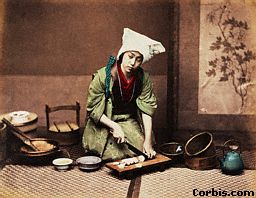The chemistry of the tea plant, which contains over 500 chemical compounds, is exceedingly complex. In fact, it is a chemical process, fermentation (oxidation or enzymation as it is more properly known), that allows for the foliage of the tea to be converted into the shriveled, dry leaves that can be found in tea bins or bags. This process of oxidation also brings about the differentiation between green, oolong, and black tea. Heat destroys the natural enzymes in the plant that, through oxidation, convert the polyphenols proteins, and other chemical components of the tea leaf into the oxidized forms that can be found in black and oolong tea. Thus, both white and green tea (which do not undergo oxidation) have higher levels of polyphenols than black or oolong tea.
The chief components of the camellia sinensis infusion are the plant's antioxidants. These antioxidants found in the tea plant are classified as polyphenols and include the potent flavenols catechin, epicatechin, gallocatechin, epigallocatechin, epicatechin gallate, gallocatechin gallate, and epigallocatechin gallate.
Polyphenols, however, not only dictate the quality of tea, but also are the principal source of the beverage's complex, yet nutritionally advantageous, chemical properties. Like other antioxidants, polyphenols prevent against the oxidation, and consequential degeneration and mutation of cells. This beneficial property is the result of the ability of tea antioxidants to neutralize cellular free radicals, or unstable molecules that seek out the electrons of other cellular molecules in order to gain chemical stability. By donating excess electrons to the unstable free radicals (electron dononation), these polyphenols are able to prevent a chain effect of cell degeneration that can lead to the disturbed cell cycles that cause cancer or other diseases that stem from cellular mutations. In fact, these polyphenols, especially EGCG, are the compounds responsible for the cancer-inhibiting properties that tea has consistently exhibited in labratory and population studies.
In addition to preventing against cellular mutations, tea has been shown to lower cholesterol levels of hypocholesterolemic adults by attaching to LDL (bad) cholesterol. Other research suggests that tea can strengthen the digestive tract, prevent dental cavities (through its high fluoride content), promote human resistance to viruses (possibly by preventing against further mutations in pathogens), deodorize the mouth, and generally restrict body odor.
Although this claim is not as well documented as tea's anticarcinogenic effects, recent research has shown that tea is an effective antimicrobial agent. Some research has even found that tea is nearly as effective as the conventional antibiotic ampicillin in controlled labratory experiments, although this is very preliminary.
Another element of tea that is frequently misunderstood is that of the beverage's caffeine content. Although tea does contain caffeine, recent research has shown that tea polyphenols inhibit caffeine absorbtion into the bloodstream, thereby limiting the effect of the infusion's caffeine content. Even so, tea doesn't have that much caffeine to begin with; a cup of green tea holds just 8-16 mg and black tea contains only 25-100 mg per 6 oz. In comparison, a bar of chocolate has well over 100 mg of caffeine, as does drip coffee and espresso.

